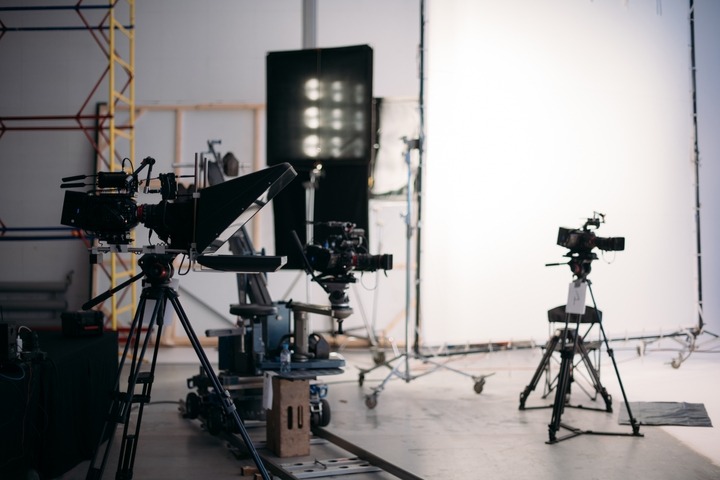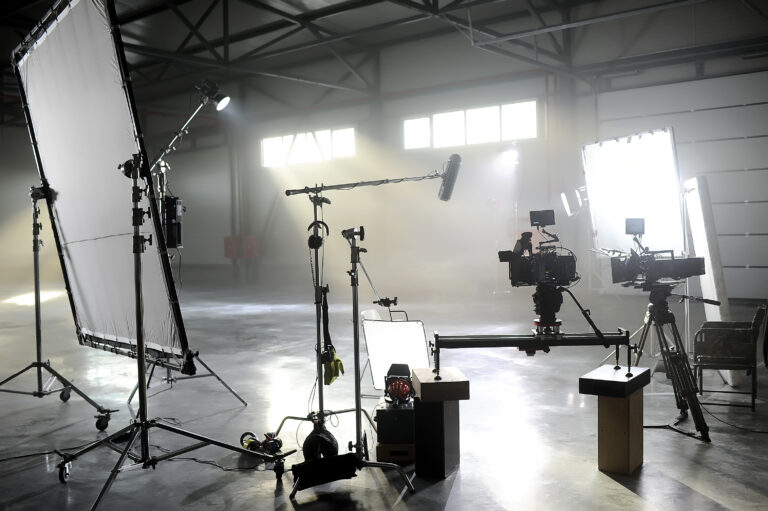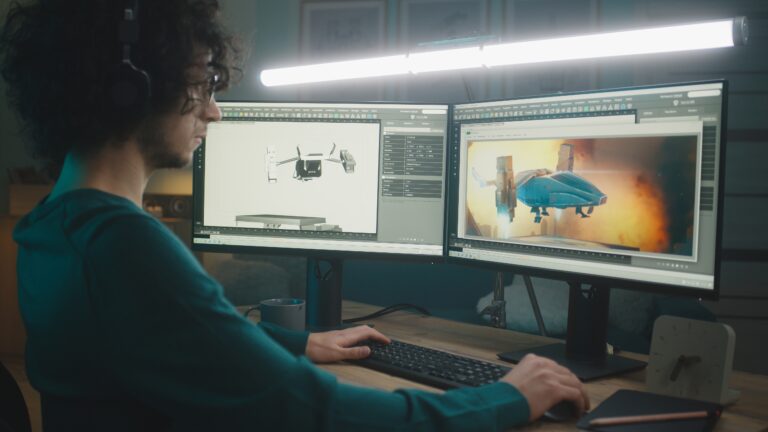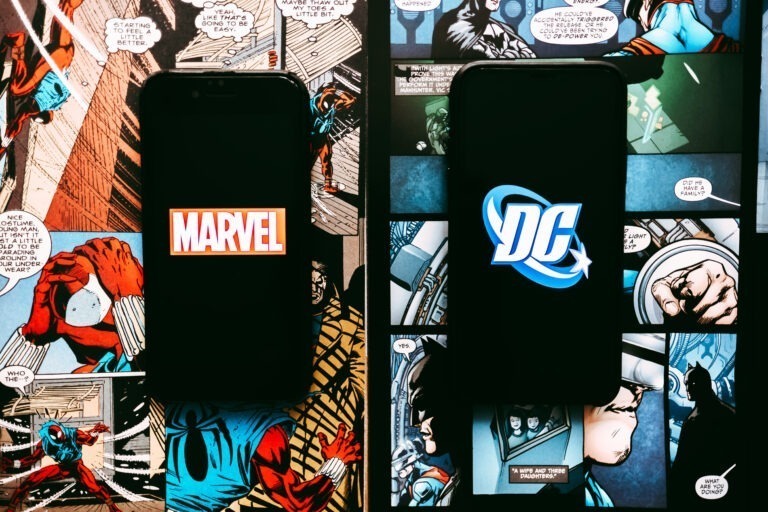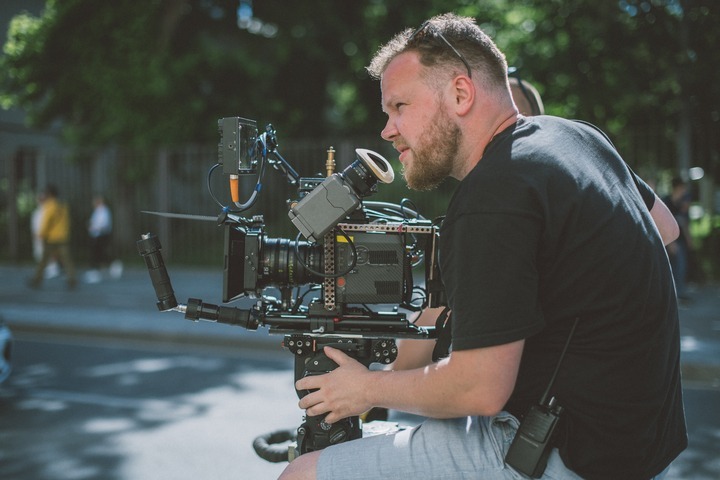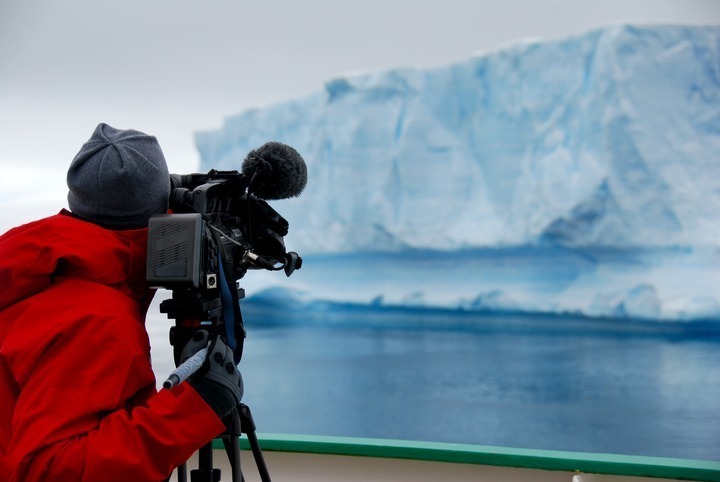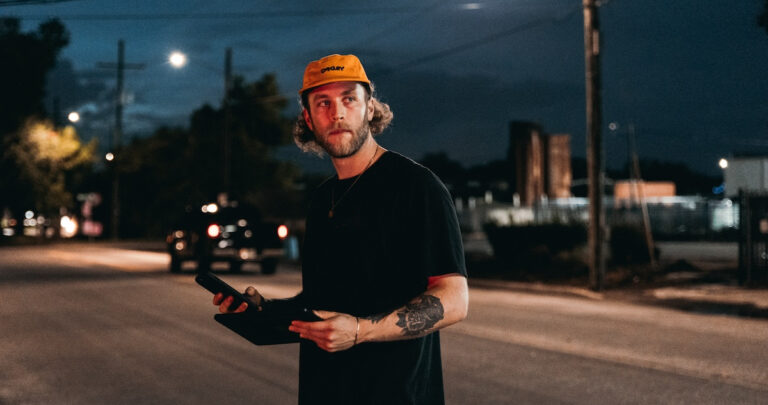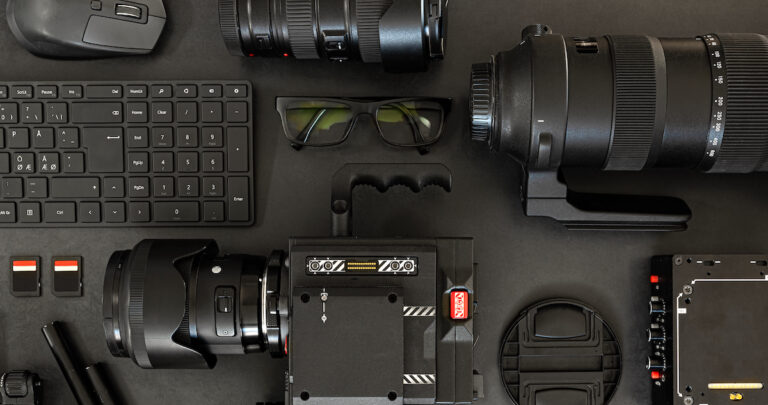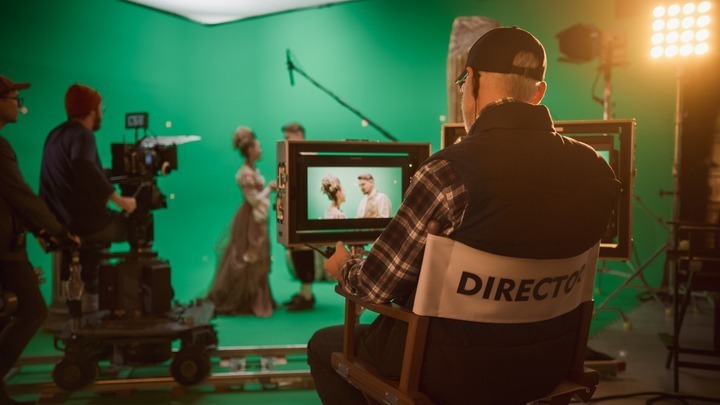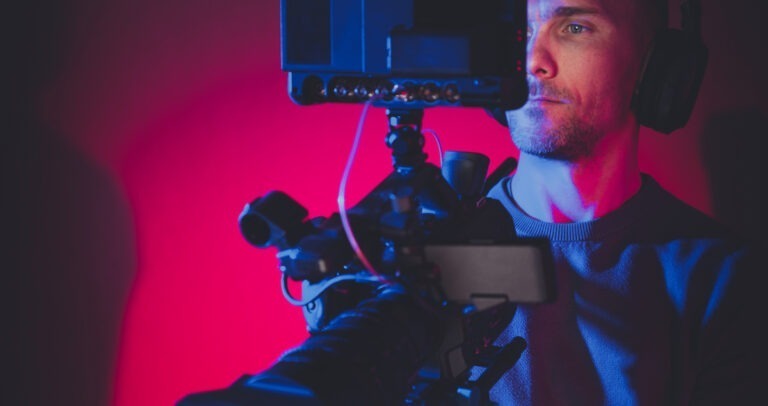Filmmaking equipment forms the cornerstone of an $81.64 billion film industry. These incredible tools bring Golden Globe winners like Oppenheimer to life on screen. And while state-of-the-art cameras and microphones are a must-have on million-dollar film sets, you can still create outstanding productions with beginner filmmaking equipment. So, whether you’re a seasoned filmmaker or browsing the filmmaking innovation aisles, you can draw inspiration from this list of the best filmmaking equipment.
At Voice123 – where you’ll find incredible filmmaking hacks, tips, and trends – we believe in the everlasting power of voice. So, here’s the insider’s guide to what is filmmaking equipment, and the best film equipment for iPhones, audio, and beginner filmmakers.
Get ready to create cinematic delights with the best lenses, lights, and mics in film equipment!
What is filmmaking equipment
Filmmaking equipment is the tools, devices, and recording gear filmmakers use to capture and edit a production’s audio and visual elements. Filmmaking equipment includes audio recording devices like microphones for sound, lighting equipment for proper illumination, cameras and additional lenses for shooting scenes, and editing software to refine the final product.
For example, you can place lapel mics on a person’s clothes during interviews for convenient recording or use handheld mics for on-the-go narration. Portable LED panels help create specific atmospheres in scenes ranging from fear to romance. Wide-angle lenses can capture sweeping landscapes, while a prime lens is better for cinematic close-ups. These essential film tools form the backbone of a filmmaker’s toolkit. Now, let’s look more comprehensively at the filmmaking equipment list.
The essential filmmaking equipment list
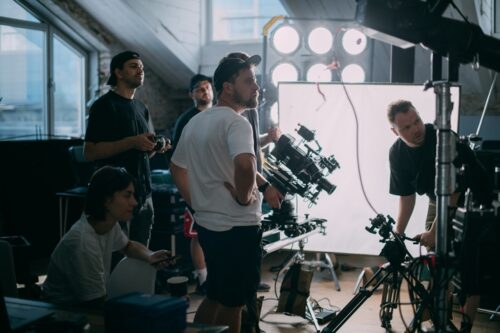
- Cameras are primary visual filming tools. With adjustable settings like aperture, shutter speed, and ISO, they can frame shots creatively, enhancing visual storytelling. High-quality cameras maintain sharp, detailed visuals, contributing to the cinematic experience.
- Microphones capture clear, crisp sound and record dialogue, ambient sounds, and specific audio effects. Good audio quality enriches audience engagement, improving the film’s realism and emotional impact.
- Lighting kits control a scene’s illumination. There are different lights for key, fill, and backlighting to shape the visual mood, so you can experiment with shadows and highlights. It adds depth, atmosphere, and visual appeal, emphasizing a scene’s emotion and detail.
- Tripods are stable platforms that hold cameras. To minimize shaky footage, you can set it up at different angles and heights during still scenes or interviews. Stability creates professional-looking footage, preventing distraction and producing a polished final version.
- Lenses affect a shot’s perspective and depth of field. Filmmakers can experiment with lenses for different visual effects, like wide-angle for expansive scenes or prime lenses for a cinematic look. Lenses offer creative control by capturing specific emotions and perspectives.
- Editing software assists in assembling, cutting, and refining footage. You can edit sequences, add effects, and fine-tune audio for engaging narratives. During post-production, raw footage is transformed into a polished film with visual coherence.
Now, let’s break down some of the best iPhone filmmaking equipment for filmmakers.
The best iPhone filmmaking equipment
iPhone filmmaking equipment includes a stabilizer, a separate microphone, and video editing software. Here’s more on each one.
- Stabilizer: The DJI Osmo Mobile 3 has a lightweight design, active tracking, and gesture control, which suits filmmakers on the move.
- Microphone: The external Rode VideoMic Me-L mic enhances recorded audio, eliminating noise interference.
- Editing software: The Filmic Pro app lets you fine-tune shots by adjusting the exposure, focus, and manual white balance.
These tools help create professional-looking and sounding videos with iPhone filmmaking equipment that fits your pocket. But, when it comes to sound, what’s the best filmmaking audio equipment? Let’s take a look!
Filmmaking audio equipment
Filmmaking audio equipment includes microphones, audio recorders, accessories, monitoring equipment, wireless systems, and post-production software to create impressive audio. Here’s a breakdown of each one.
- Shotgun microphones like the Sennheiser MKH 416 or Rode NTG series isolate sound sources and minimize background noise when capturing directional audio.
- Audio recorder field mixers like the Sound Devices MixPre-6 offer multiple inputs and precise control, which help balance audio levels during recording.
- Accessories like windshields and shock mounts work for outdoor shooting. The Rycote Softie windshield and Rode PSM1 shock mounts protect against wind noise and handling vibrations.
- Monitoring equipment like the Sony MDR-7506 closed-back headphones helps with audio detection issues during recording. So you can make adjustments during recording.
- Wireless systems like the Sennheiser EW 100 G4 wireless system operate in the UHF frequency range, allowing for a stable and interference-resistant wireless connection.
- Audio editing software programs like Audacity allow for precise editing, mixing, and enhancing recorded audio during post-production.
So, now you have the best filmmaking audio equipment, but what kind of beginner filmmaking equipment is best for getting started?
Beginner filmmaking equipment
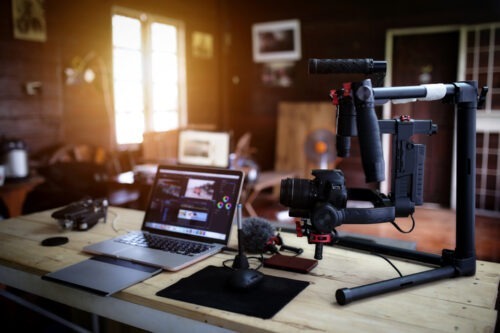
- Smartphone cameras capture decent-quality video with slow-motion and time-lapse. Most iPhone and Android camera models, including older models, can record good-quality audio and video footage.
- Tripods keep your footage professional-looking with hands-free shooting and adjustable heights. Manfrotto and JOBY GorillaPods are among the most common options for beginners.
- External microphones reduce background noise, capture precise sound, and enhance video quality and production value. RØDE has several affordable, good-performance options.
- Video editing software allows you creative control to import footage, cut, arrange, and add effects. DaVinci Resolve has advanced editing capabilities and is intuitive for beginners.
- Lighting kits improve visibility, reduce shadows, and enhance image quality in low-light conditions. Neewer 660 LED Video Light Kit has light stands and softboxes suitable for beginners in home studios.
Filmmaking equipment and the power of voice
Filmmaking equipment and voice are crucial to creating dynamic and engaging audio-visual content. High-quality filmmaking equipment, such as DSLR cameras, boom mics, and lighting kits, contribute to producing visually appealing and professional-grade content. And the power of voice, through character dialogue or narrations, brings stories to life and connects with audiences emotionally. Think of Peter Coyote’s narration for The Vietnam War; his voice conveys a powerful message that immerses viewers in the story. So, by combining high-quality audio and video footage from the best filmmaking equipment with a powerful voice over, you can elevate your film’s narrative, making it more compelling and impactful. So whether you need a voice actor for a narrative film or a documentary, you can find the best vocal talent on Voice123.
Final thoughts on film equipment
Each item in your film toolkit, from cameras to sound devices, is vital for capturing and enhancing your artistic vision, from video editing software for iPhones to audio recorders and post-production software.
Now that you’ve got a breakdown of the best filmmaking equipment list, you know the best gadgets to help create your next video masterpiece. Then, choose from the incredible vocal talent on Voice123 or use our professional Managed Services to handle the entire project.
It’s time to turn your vision into motion with fantastic beginner filmmaking equipment, like lights, cameras, and lenses!
FAQs
You need a camera (DSLR, mirrorless, or cinema camera), a set of lenses suited for various shots, audio recording devices (like microphones), lighting equipment for proper illumination, stabilizers or tripods for steady shots, and editing software for post-production.
Filmmakers use professional cameras capable of high-resolution recording, lenses for different visual effects, lighting setups including key, fill, and backlighting, audio recording tools like boom microphones or lavaliere mics, grip equipment for camera support and movement, and accessories for specific shots like drones or specialty rigs.
They are development, pre-production, production, direction, cinematography, editing, and post-production.
You need a well-crafted script, talented cast and crew, necessary equipment (cameras, lighting, and sound recording devices), suitable locations or sets, production design and props, a production schedule, permits/licenses as needed, insurance, and post-production resources like editing software and sound mixing facilities.


